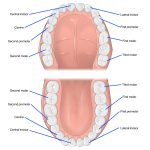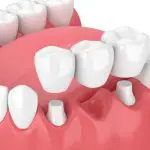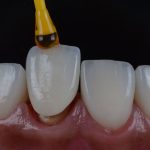Say Goodbye to Teeth Gap: Effective Ways to Get Rid of the Gap in Your Teeth

A gap between the teeth can be a source of self-consciousness and embarrassment for many people. Whether it’s a small space or a larger gap, it can make people feel insecure and hesitant to smile. Fortunately, there are effective ways to get rid of the gap in your teeth and achieve a more confident smile. From dental procedures to natural remedies, there are various options available to address this common dental issue. Dental procedures such as braces, veneers, and bonding can be used to close gaps between teeth. Braces are a common solution for those with larger gaps or misaligned teeth. They work by applying pressure to gradually shift teeth into the desired position. Veneers are thin, custom-made shells that are placed over the front surface of teeth to improve their appearance. Bonding involves applying a tooth-colored resin to the teeth to fill in gaps and improve their shape. These procedures can provide long-lasting results and improve the overall look of your smile. However, they can be costly and may require multiple appointments with a dentist.
Teeth gap, also known as diastema, is a dental condition in which there is a noticeable space between two or more teeth, usually the front teeth. This gap can occur naturally or as a result of various factors like genetics, missing teeth, jaw bone size, or gum disease. While some people embrace their teeth gap as a unique feature, others may feel self-conscious about it and seek ways to close it. Fortunately, there are several effective ways to get rid of teeth gap, including orthodontic treatments like braces or aligners, dental bonding, veneers, or dental implants. By addressing this dental issue, individuals can achieve a more confident and aesthetically pleasing smile.
People may want to get rid of teeth gap due to several reasons. Firstly, it can impact their self-confidence and make them feel self-conscious about their smile. This can affect their social interactions and make them hesitant to engage with others. Secondly, teeth gap can cause difficulty in biting and chewing food, leading to digestive problems. It can also affect speech patterns and cause pronunciation issues. Lastly, teeth gap can lead to dental health problems such as gum disease, tooth decay, and tooth shifting. Therefore, getting rid of teeth gap can improve both the aesthetic appearance and the overall health of an individual’s teeth and gums.
Braces
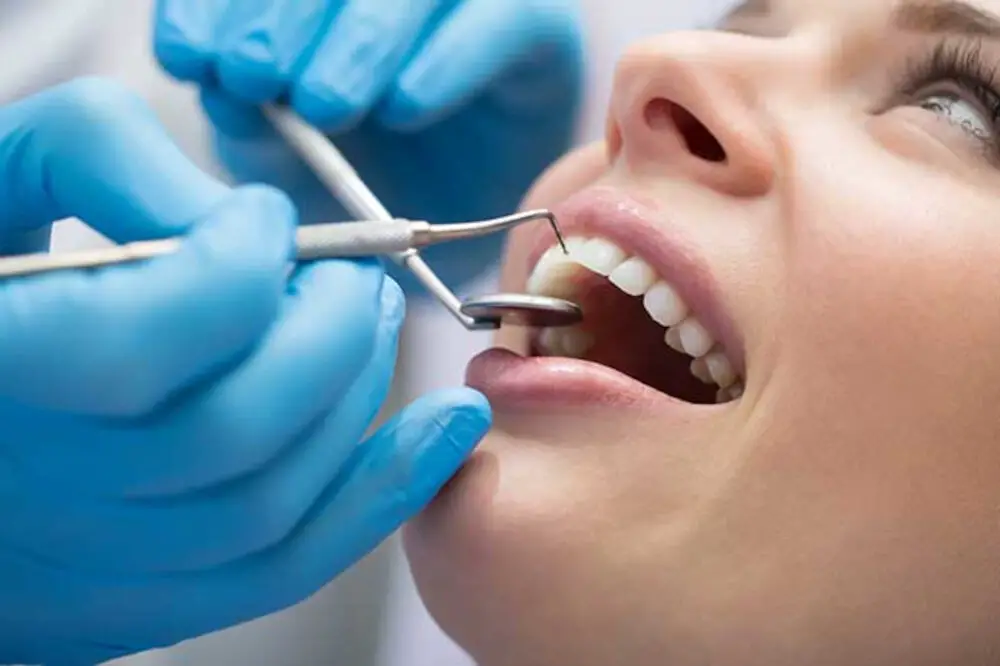
Braces are a popular orthodontic treatment that can effectively correct teeth gaps. These devices consist of brackets, wires, and bands that work together to exert gentle pressure on the teeth, gradually moving them into the correct position. Braces are a versatile solution that can address various dental issues, including overcrowding, misaligned teeth, and bite problems. They can be customized to suit each patient’s unique needs and are available in a range of materials, including metal, ceramic, and clear plastic. While braces are a highly effective solution for teeth gaps, they require some commitment on the part of the patient. Braces must be worn for an extended period, typically ranging from six months to two years, depending on the severity of the dental issues being addressed. During this time, the patient must attend regular check-ups with their orthodontist, who will make adjustments to the braces to ensure they are working correctly. Additionally, the patient must take extra care to maintain good oral hygiene, as braces can make it harder to clean the teeth and gums properly. However, the results of braces treatment are well worth the effort, as they can produce a beautiful, straight smile that lasts a lifetime.
Braces are an orthodontic appliance that is used to correct teeth alignment, including gaps between the teeth. They work by applying constant pressure on the teeth, which gradually moves them into the desired position. Braces consist of brackets, wires, and bands that are bonded to the teeth and adjusted over time to achieve the desired results. The brackets are attached to the teeth and the wires are threaded through them, creating tension that moves the teeth. The bands, which wrap around the brackets, help to hold the wires in place. As the teeth move, the bone surrounding them also changes shape, allowing the teeth to settle into their new position. Braces are effective in closing gaps between teeth and improving overall dental alignment, providing a confident and healthy smile.
There are several types of braces available to help close the gaps between teeth. Traditional metal braces are the most common type and consist of metal brackets and wires that are adjusted over time to gradually shift teeth into the desired position. Ceramic braces are similar to metal braces but use clear or tooth-colored brackets to make them less noticeable. Lingual braces are attached to the back of the teeth, making them virtually invisible from the front. Clear aligners, such as Invisalign, are another option that uses a series of custom-made clear trays to gradually move teeth into place. Each type of brace has its own benefits and drawbacks, so it’s important to discuss with your orthodontist which option is best for you.
Braces have long been a popular option for closing teeth gaps. They work by gradually applying pressure to the teeth, shifting them into the desired position. The main advantage of braces is their effectiveness; they are highly successful in closing gaps and improving overall bite alignment. However, there are some downsides to consider as well. Braces can be uncomfortable and sometimes painful, especially during the adjustment period. They also require regular maintenance and cleaning, which can be time-consuming and inconvenient. In addition, braces are visible, which can be a concern for some people who prefer a more discreet treatment option. Overall, while braces can be a highly effective way to close teeth gaps, it’s important to weigh the pros and cons before making a decision.
Veneers

Veneers are a popular cosmetic dentistry solution for many people who want to get rid of the gap in their teeth. These thin layers of porcelain or composite resin are custom-made to fit perfectly over the front surface of your teeth. They can be used to cover up gaps, chips, cracks, or other imperfections in your teeth, giving you a brighter, more symmetrical smile. Veneers are a relatively quick and painless procedure that can dramatically improve the appearance of your teeth. They are also long-lasting and easy to care for, making them a great investment in your smile. One of the biggest advantages of veneers is that they are a minimally invasive procedure. Unlike other cosmetic dentistry options that require extensive drilling or reshaping of your teeth, veneers are simply bonded to the front surface of your teeth. This means that you can get the results you want without having to undergo extensive dental work. Additionally, veneers are highly customizable, meaning that your dentist can match the color, shape, and size of your veneers to your existing teeth for a seamless, natural-looking result. With proper care, veneers can last for many years, making them a great long-term solution for anyone looking to improve their smile.
Veneers are thin, custom-made shells that cover the front surface of your teeth to improve their appearance. They are typically made of porcelain or composite resin and are bonded to the teeth using a strong adhesive. Veneers can be used to address a range of cosmetic concerns, including teeth gaps, discoloration, chips, and misshapen teeth. The process of getting veneers typically involves several appointments with your dentist, during which they will take impressions of your teeth, prepare them for the veneers, and finally bond the veneers to your teeth. With proper care, veneers can last for many years, making them a popular choice for those looking to achieve a bright, straight smile.
If you want to get veneers to fix the gap in your teeth, the first step is to schedule a consultation with a cosmetic dentist. During the consultation, the dentist will evaluate your teeth and discuss your goals and preferences. After that, the dentist will prepare your teeth for the veneers by removing a small amount of enamel from the surface of each tooth. Then, the dentist will take impressions of your teeth to create custom veneers that fit perfectly. The veneers are made from durable materials that mimic the natural appearance of teeth. Once the veneers are ready, the dentist will bond them to your teeth using a special adhesive. The result is a beautiful, natural-looking smile that you can enjoy for years to come.
Veneers are a popular option for treating teeth gaps, and they offer several advantages. They can be customized to match the color and shape of your existing teeth, providing a natural-looking solution to the gap. Additionally, veneers are durable and long-lasting, typically lasting for several years with proper care. However, there are also some potential downsides to consider. Veneers can be expensive, and the procedure to apply them is irreversible, meaning that the natural teeth must be permanently altered to accommodate them. Additionally, veneers can be prone to chipping or cracking, and they may not be suitable for all patients, particularly those with significant dental issues or gum disease. It’s important to weigh the pros and cons of veneers carefully before deciding if they are the right solution for your teeth gap.
Bonding

Bonding is a cosmetic dental procedure that involves the application of a tooth-colored resin material to the surface of the teeth to improve their appearance. It is an excellent treatment option for individuals who have gaps in their teeth. The procedure involves the application of a bonding agent to the teeth, which is then cured using a special light. The resin material is then applied to the teeth and shaped to fill in the gaps. The material is then polished to give it a natural appearance, which blends in with the surrounding teeth. Bonding is a quick, painless, and cost-effective way to get rid of gaps in your teeth. One of the benefits of bonding is that it is a non-invasive procedure that does not require the removal of any tooth structure. It is also a reversible procedure, which means that the resin material can be removed if necessary. Bonding can also be used to cover up stains, chips, and other imperfections in the teeth. The results of bonding can last for several years, depending on the individual’s oral hygiene habits and lifestyle. If you have gaps in your teeth and are looking for an effective way to get rid of them, bonding may be the perfect solution for you.
Bonding in dentistry refers to a cosmetic dental procedure where a tooth-colored resin material is applied to the teeth to improve their appearance. The resin material is shaped and molded to fill in gaps, chips, or cracks in the teeth, or to change their shape, size, or color. The bonding process involves etching the surface of the tooth, applying a bonding agent, and then placing and sculpting the resin material. Once the resin is in place, it is hardened with a special light and polished to blend in with the surrounding teeth. Bonding is a quick, painless, and affordable way to improve the aesthetics of your teeth, and can be a great solution for closing gaps between teeth.
If you’re looking to say goodbye to the gap in your teeth, one effective solution is to get bonding. Bonding is a cosmetic dental procedure that involves applying a tooth-colored resin to the teeth to improve their appearance. It’s a relatively straightforward process that typically involves roughening the surface of the teeth, applying a conditioning liquid, and then applying the resin material. The resin is then shaped and molded to fit the teeth, and a special light is used to harden the material. Bonding can be a great option for those who want to improve the appearance of their teeth quickly and without the need for more extensive dental work. It’s important to note, however, that bonding is not a permanent solution and may need to be replaced every few years.
The bonding procedure is an effective way to fix teeth gaps. One of the primary benefits of bonding is that it is a painless and non-invasive process. Bonding is also a relatively quick solution, requiring only one visit to the dentist. Additionally, bonding is an affordable option compared to other treatments like veneers or braces. However, there are some downsides to bonding. The material used in bonding is not as strong as natural teeth and is prone to chipping or staining. Bonding also requires proper care and maintenance to ensure its longevity. Finally, while bonding is a cosmetic procedure, it is not a permanent solution, and the bonding material may need to be replaced after several years.
Invisalign
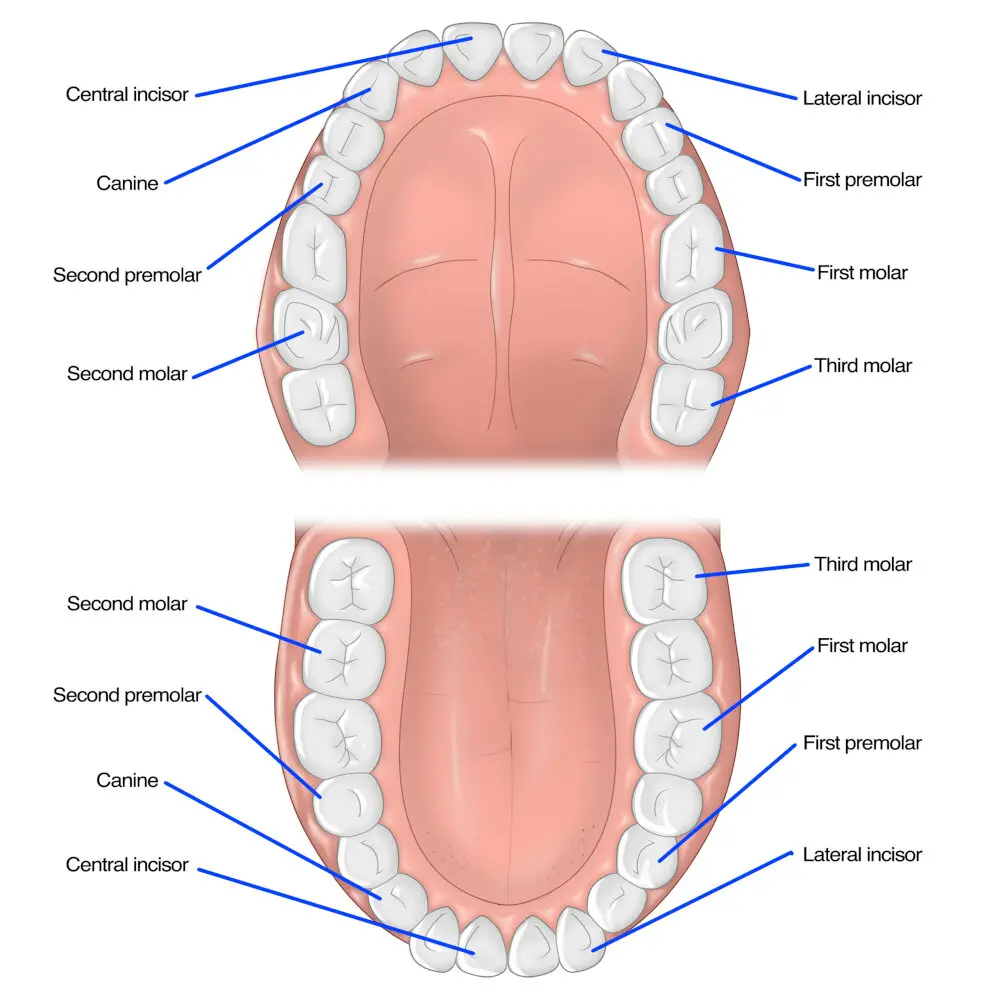
If you’re self-conscious about gaps in your teeth, you may want to consider Invisalign. This orthodontic treatment uses clear aligners that are custom-made for your teeth. The aligners gradually shift your teeth into the desired position, closing gaps and correcting other dental issues. Invisalign is a great option for people who want to straighten their teeth without the hassle and discomfort of traditional braces. The aligners are virtually invisible, so you can wear them with confidence, and they can be removed for eating and cleaning. The treatment time varies depending on the severity of the dental issues, but most people see results in 6-18 months. One of the biggest advantages of Invisalign is that it’s a comfortable and convenient option for people with busy lifestyles. Unlike traditional braces, there are no metal brackets or wires to irritate your mouth, and you won’t need to visit your orthodontist as frequently. You’ll only need to switch out your aligners every 1-2 weeks, and your orthodontist will monitor your progress remotely. Invisalign is also a more precise option than traditional braces, as the aligners are custom-made for your teeth. This means that you’ll get the exact results you want, without any unexpected surprises. So if you’re looking for an effective and discreet way to close the gaps in your teeth, Invisalign is definitely worth considering.
Invisalign is a modern orthodontic treatment that uses clear and removable aligners to gradually straighten teeth and correct dental problems such as teeth gap. The aligners are custom-made to fit the patient’s teeth and are replaced every two weeks with a slightly adjusted set to continue the straightening process. Invisalign works by applying gentle and constant pressure to teeth, moving them into their desired position over time. As the treatment progresses, the aligners become less noticeable, making them an attractive option for people who want a discreet and convenient way to improve their smile without the discomfort and appearance of traditional metal braces. With regular use and proper care, Invisalign can effectively close gaps between teeth and provide patients with a beautiful and healthy smile.
Invisalign is a popular orthodontic treatment used to straighten teeth. The procedure begins with a consultation with a dentist or orthodontist to discuss the patient’s concerns and goals. If Invisalign is deemed appropriate, the dentist will take impressions of the patient’s teeth and create a 3D model of the treatment plan. The patient will then receive a series of clear, removable aligners that are custom-made for their teeth. The aligners are worn for 20-22 hours a day and are changed every two weeks to gradually shift the teeth into the desired position. The treatment can take anywhere from several months to a few years depending on the severity of the misalignment. Regular check-ups with the dentist are necessary to ensure that the treatment is progressing as planned. Invisalign is a discreet and convenient option for those looking to straighten their teeth without traditional metal braces.
One of the most popular ways to get rid of teeth gaps is by using Invisalign. The clear, plastic aligners are a discreet way to gradually shift teeth into proper alignment. One of the main advantages of Invisalign is that they are virtually invisible, making them a great choice for people who are self-conscious about traditional metal braces. Invisalign also allows for easier maintenance of oral hygiene as they are removable, and there are no brackets or wires that can trap food or make brushing and flossing difficult. However, the treatment can be more expensive than traditional braces and may not be suitable for all types of teeth gaps. Additionally, patients must be disciplined in wearing the aligners for 22 hours per day and changing them every two weeks, which can be challenging for some.
There are several effective ways to get rid of the gap in your teeth. The most common way is through orthodontic treatment, such as braces or clear aligners, which gradually move the teeth closer together and close the gap. Another option is dental bonding, which involves applying a tooth-colored resin material to the teeth to fill in the gap. Veneers can also be used to cover the gap by placing thin shells of porcelain or composite material over the front of the teeth. In some cases, dental implants or bridges may be recommended to replace missing teeth and close the gap. It is important to consult with a dentist or orthodontist to determine the best option for your specific needs.
When it comes to closing a gap in your teeth, there are several options to consider based on your individual needs and preferences. If you have a small gap, dental bonding may be a good choice. This involves a tooth-colored resin being applied to the teeth and shaped to fill in the gap. For larger gaps, orthodontic treatment with braces or clear aligners may be necessary to shift the teeth into the correct position. Another option is veneers, which are thin shells of porcelain that are permanently bonded to the teeth to improve their appearance. Ultimately, the best option for closing your teeth gap will depend on factors such as the size of the gap, the health of your teeth, and your budget. Consulting with a dentist or orthodontist can help you make an informed decision and achieve a beautiful, gap-free smile.
Consulting with a dental professional before making any decision related to your teeth is of utmost importance. A dental professional has the knowledge, skills, and expertise required to assess your dental situation and recommend the best course of action. Attempting to fix teeth gaps without consulting a professional can lead to irreversible damage, such as gum recession, tooth sensitivity, and even tooth loss. A dental professional can provide you with various options to close the gap in your teeth, such as orthodontic treatment, dental bonding, or dental implants, and recommend the best one based on your specific needs. Therefore, it is essential to seek professional advice before making any decisions to ensure you receive the safest and most effective treatment.
Conclusion

In conclusion, having a teeth gap can be a source of insecurity and self-consciousness for many people. However, with the right approach and techniques, it is possible to get rid of the gap in your teeth and achieve a confident, beautiful smile. From orthodontic treatments like braces and aligners to cosmetic procedures like dental bonding and veneers, there are a variety of effective ways to close the gap and achieve the smile you’ve always wanted. It’s important to consult with a dental professional to determine the best approach for your specific needs and goals. With dedication and patience, you can say goodbye to teeth gap and hello to a stunning smile.
